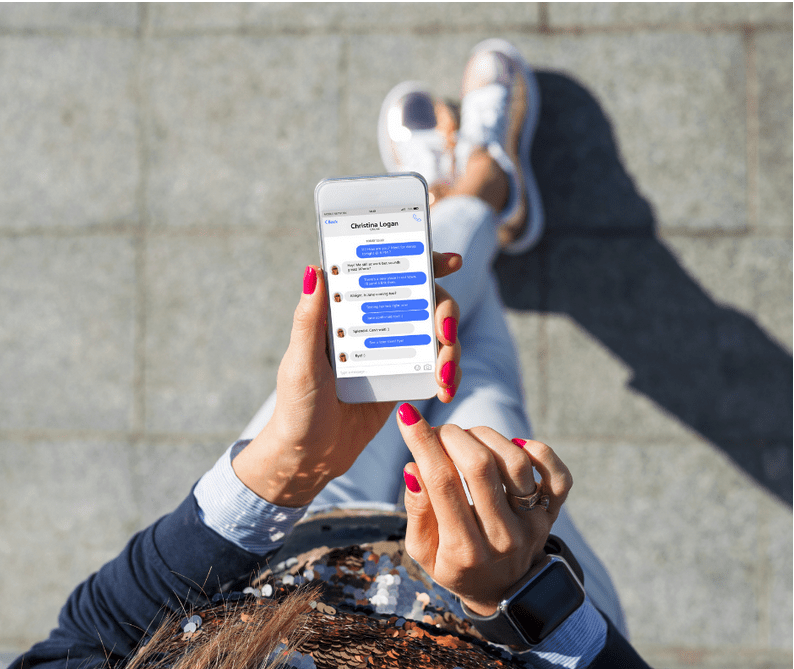Intro
If you use your chatbot in Facebook Messenger, you need to make sure your bot complies with the Facebook Messenger policies to avoid issues with your Facebook page.
On December 16th 2020, Facebook announced a series of limitations for chatbots on its Messenger app. These changes would affect bots based or on clients or admins based in the EEA. Later, on March 30th 2021, Facebook announced it also included Japan within these restrictions.
If you were affected, you might have had to adapt your flows and manage your chatbot without valuable features such as One Time Notifications, Audio or Video content, Persistent Menu, Typing Animation, and Bot Links.
Thankfully, since April 13th 2021, Facebook has started rolling back some of these features. Therefore, now is a great time to ramp up your Messenger bots and leverage all the functionalities.
This article will explain why Facebook messenger reviewed its privacy policy, and the privacy changes for EEA/Japan users and how it affects chatbots in real life. It will help you keep up with all the updates and understand what has changed and what has returned.

Why is there a new Facebook Messenger Privacy Policy?
The Facebook Messenger restrictions are taking place so Facebook can comply with privacy guidelines dictated by the European Economic Area (EEA) and Japan. It is important to note that, in this case, the EEA refers to the 27 countries in the European Union (EU), plus Norway, Iceland, Liechtenstein, and the United Kingdom.
The new Facebook Messenger Privacy Policy regulates and changes how we send and receive promotional messages on Facebook Messenger. By promotional messages, Facebook means any message that contains any promotion, such as a product, service, website, social media page, etc.
Facebook implemented these privacy policy changes for a variety of reasons: to improve the Facebook Messenger experience to users, to help businesses improve their customer service, to provide faster responses to customers, to avoid spam, and to share information and updates that might be relevant to customers.
What are the Changes on Facebook Messenger?
Facebook Messenger made two relevant changes: the 24-hour-window response and the use of message tags.
Respond in a 24-Hour Window
When someone interacts with your bot via Facebook Messenger, it opens a “24-hour messaging window”, which means that in the next 24 hours, you can send a message to your customer with no constraint.
In this case, every time your customer “talks” to your chatbot, it automatically opens a new 24-hour window messaging, and it only closes when your customer does not interact with your chatbot anymore.
Use Message Tags ad More.
On Facebook Messenger, all messages sent and received via chatbot outside the 24-hour window will be tagged according to four different categories. These messages must be labelled; otherwise, Messenger won’t send them to your customers.
These four tags are:
- Event Update: You use this message tag to send reminders or updates to customers about an event.
- Post Purchase: It notifies the customer about updates of a recent purchase. The Post Purchase message tag is used to inform a customer of a new purchase, a new shipment, or even the status of an order.
- Account Update: Account Update notifies any relevant changes or notification of suspicious activity in the user’s account.
- Human-Agent: This message tag aims to highlight messages or user inquiries that need to be responded to by human agents. They have a window of 1 week to respond to those messages.
If the messages you send in your Messenger chatbot do not relate to any of the four message tags, Facebook provides three alternatives:
- One-time notification: You ask for permission to send a message outside the 24-hour window with One-time notification.
- Sponsored messages: This option means you can pay Facebook to deliver your messages.
- Omnichannel: Omnichannel implies the ability to communicate with your clients via other channels such as SMS, WhatsApp, Instagram, email, phone, etc.

The New Facebook Messenger Privacy Rules in Europe and Japan
Since December 2020, Facebook restricted the use of Facebook Messenger to comply with the new privacy rules in the EEA. Since March, these rules also started to apply to Japan.
Even though Facebook Messenger has started to roll back some of these features in April, these privacy changes significantly affect customer interaction and how you use Facebook Messenger chatbots.
The new Facebook Messenger privacy changes will affect you if: you have a European or Japanese Facebook page, if one of your page admins is in Europe or Japan, or if you interact with EEA or Japanese customers. Those changes mean that several Facebook Messenger API’s won’t be available for businesses based in Europe or Japan, for companies with a customer base located in those regions or even for companies with a global presence.
What you can’t do
Here are some of the most relevant changes in Facebook Messenger after the new Privacy Rules:
- PSIDs Matching: You won’t be able to move your users from one chatbot to another.
- Templates: Facebook offered templates to improve user experiences, such as a Receipt template, Media template and Airline templates. These templates won’t longer be available.
- Profile Information: You won’t see, view, or manipulate user information, including their first and last name, profile picture, location, timezone, and gender.
- Web Plugins: With web plugins,, you can create links that appear on your website that drives website visitors directly to Messenger. Since these changes, web plugins won’t occur as usual on your website.
Which features have returned?
As previously mentioned, some features that Facebook Messenger initially restricted have returned. See below:
- Typing indicator: Customers will still be able to see that you’re typing. Typing indicators can appear as if your bot is typing out a response, and they also appear in Live Chat when a Human Agent is typing a manual response.
- Persistent Menus: Persistent Menus are the little menus available to the user during the conversation with your bot.
- Live Chat Agent Profile: Customers will view the picture or the name of the live chat agent talking to your customers in the Live Chat.
- One-time notifications: Users can use the one-time notifications feature normally.
- Sending and receiving images and media: You will be able to receive and send pictures and different kinds of media, such as audio, video, PDF, etc.
- Chat Plugin Guest Mode Upgrade: If a customer chats with your bot on a website Chat Plugin, they can move from an anonymous chat into their Facebook profile.
- Referral URLs: Referral URLs are the links that lead users to start a conversation on Messenger automatically.
- Analytics and Statistics: Messenger allows you to see and measure stats such as Open Rates, Click-through rates, and more.
What you can still do normally
The below Messenger features will continue to work as usual:
- Quick Replies: Create quick replies to users across all devices.
- Message Tags (Content-type): All Message Tags introduced earlier will still function normally.
- Conversation starters and Welcome Messages: You can still create, customize and automate responses for Conversation Starters and Welcome Messages.
- Keyword triggers: You can still use keyword triggers on all devices
- Handover Protocol: When Facebook determines which app, such as Flow XO, prioritises a conversation with a user.
- Comments Growth Tool: The Comments Growth Tool (CGT) allows you to automate specific actions, such as liking a comment or sending a direct message, based on the words to your Facebook Page’s post.
- m.me Links and Referral URLs: The m.me link is a link that sends subscribers to Facebook Messenger. You can still add m.me links in your Facebook Business Manager.
How to cope with all these changes?
You can take some measures to keep up with all the updates and changes, especially if your business has a global customer base. We suggest you:
- Check if your customer base contains EEA/Japanese customers to see if they will be affected by the new privacy rules.
- Check your Facebook page admins and remove them, if necessary.
- Using quick replies for all your essential flows.
- Create specific flows for users in the EU/Japan.
- Use other channels to communicate with your customers, such as email, WhatsApp or SMS.
Flow XO
Facebook Messenger is likely to keep reviewing its features and introducing new rules, especially with the new privacy rules. You need to make sure you have a chatbot that is compliant with all the relevant changes and will help you adjust to them.
Flow XO is a feature-rich chatbot platform that allows you to create code-free bots that interface with Messenger quickly and easily. It is a cross-platform service and allows your bots to go omnichannel, so your customers can engage with you not only on Messenger but across many other platforms.
Flow XO is a reliable and user-friendly chatbot, and it can provide you with any questions or advice you may have, according to your business needs.
If you’re using Messenger or any other platform to communicate with your customers, read here how Flow XO can help you build the perfect chatbot for your business.